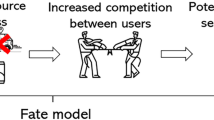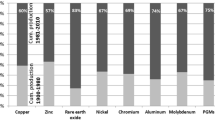Abstract
-
DOI: http://dx.doi.org/10.1065/lca2006.04.011
Background
Aims and Scope. Access to abiotic resources is vital for modern life styles. Except for ozone depletion, no other environmental threat has a potentially larger impact on our everyday lives than shortage of abiotic resources. In 'Limits to Growth' the Club of Rome identified depletion of ores and minerals as becoming a major problem during the first or second decades of the twenty-first century, and the idea was widely spread. Since then, the attitude to the problem has shifted, and many institutions, such as the European Commission, do not consider the problem acute and does not give it priority in their present action plans. Regardless of when it happens, however, the social consequences of a shortage of abiotic resources will be a major problem and the significance and nature of the problem will depend on what the world looks like then at the time and afterwards. This article discusses existing LCIA methods in relation to their views on the depletion problem.
Method
Review of existing LCIA methods in relation to depletion problem definitions.
Results and Discussion
Existing methods for characterisation and weighting of abiotic resources appear to be based on four types of problem definitions, although not always explicit: 1) assuming that mining cost will be a limiting factor, 2) assuming that collecting metals or other substances from low-grade sources is mainly an issue of energy, 3) assuming that scarcity is a major threat and 4) assuming that environmental impacts from mining and processing of mineral resources are the main problem. In addition to differences in assumptions about what will be the limiting factor, there are different views on what time scales are of interest and how to integrate the issue in LCA.
Conclusion
The main dividing line in views on abiotic resources has to do with time perspective. If only caring for the next hundred years or so, abiotic resources is a manageable problem. In taking an historic perspective with tens of thousands of years, abiotic resources become a major problem.
Recommendations and Outlook
Today there seems to be some consensus on focusing on developing characterisation methods based on future increase of impacts from using lower grade resources with consideration of resource functionality. It is essential that the choice of temporal focus is given enough attention.
Similar content being viewed by others
Author information
Authors and Affiliations
Corresponding author
Rights and permissions
About this article
Cite this article
Steen, B.A. Abiotic Resource Depletion Different perceptions of the problem with mineral deposits. Int J Life Cycle Assessment 11 (Suppl 1), 49–54 (2006). https://doi.org/10.1065/lca2006.04.011
Received:
Accepted:
Published:
Issue Date:
DOI: https://doi.org/10.1065/lca2006.04.011




